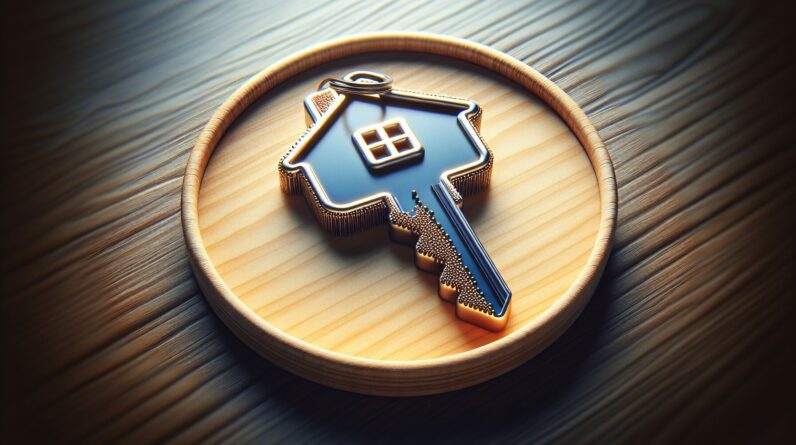
So you’re thinking about buying a house and you’ve heard the term “down payment” being thrown around. But how much do you really need to put down to secure a mortgage loan? Well, the answer is not one-size-fits-all. It depends on a variety of factors such as the price of the house, your credit score, and the type of mortgage you’re applying for. In this article, we’ll break down the different down payment percentages and give you some tips on how to determine the right amount for you. No need to stress, we’ve got your back!
Table of Contents
Understanding Down Payment
Definition of Down Payment
A down payment is a sum of money that you pay upfront when purchasing a property, typically a house or a car. It is a percentage of the total purchase price and serves as a form of security for the lender. This initial payment demonstrates your commitment to the purchase, reduces the amount of the loan you need to borrow, and lowers the risk for the lender.
Importance of Down Payment
Making a down payment is crucial when it comes to securing a mortgage loan. It not only shows your financial stability and ability to save, but it also has a significant impact on the terms and conditions of your loan. A larger down payment can result in lower interest rates, lower monthly payments, and even the elimination of private mortgage insurance (PMI). It also helps you build equity in your property at a faster rate, giving you a stronger financial position in the long run.
Factors Affecting Down Payment
Credit Score
Your credit score is one of the key factors that lenders consider when determining your down payment requirement. A higher credit score usually translates to a lower down payment percentage. It reflects your creditworthiness and the likelihood that you will repay the loan on time. Lenders view a higher credit score as an indicator of financial responsibility, making you a lower risk borrower. On the other hand, a low credit score might require a higher down payment as a way of compensating for the increased risk.
Loan-to-Value Ratio
The loan-to-value (LTV) ratio is another crucial factor in determining your down payment amount. It represents the percentage of the loan amount compared to the appraised value of the property. A higher LTV ratio indicates a riskier investment for the lender, as there is less equity to cushion against potential losses in the event of default. Therefore, a lower LTV ratio generally leads to a lower down payment requirement, while a higher LTV ratio may necessitate a larger down payment.
Debt-to-Income Ratio
Your debt-to-income (DTI) ratio is yet another consideration that lenders take into account. It measures the percentage of your monthly income that goes toward paying off debts, such as credit cards, loans, and other financial obligations. A lower DTI ratio indicates that you have more disposable income available to allocate towards your mortgage payment. Lenders generally prefer borrowers with a lower DTI ratio, making it possible to negotiate a lower down payment.
Property Type
The type of property you intend to purchase can also influence the required down payment amount. Different loan programs have varying guidelines depending on whether you are buying a primary residence, a second home, or an investment property. For instance, investment properties often require a higher down payment compared to primary residences. The details of such requirements are typically determined by individual lenders, so it is essential to research and understand their specific guidelines.

Minimum Down Payment Requirements
Conventional Loans
Conventional loans are mortgage loans that are not backed by the government. To qualify for a conventional loan, you typically need a down payment of at least 3% of the purchase price. However, a down payment of 20% or more is often recommended to avoid the need for private mortgage insurance (PMI), which can add to your monthly expenses. Keep in mind that the specific down payment requirement for a conventional loan may vary depending on factors such as credit score, LTV ratio, and overall financial stability.
FHA Loans
FHA loans, insured by the Federal Housing Administration, have more flexible down payment requirements compared to conventional loans. With an FHA loan, you may be eligible for a down payment as low as 3.5% of the purchase price. This reduced down payment requirement opens the door to homeownership for individuals who may not have a large amount of savings. Additionally, FHA loans tend to have more lenient credit score and debt-to-income ratio requirements.
VA Loans
If you are a current or former member of the military, you may qualify for a VA loan. These loans are guaranteed by the U.S. Department of Veterans Affairs and often require no down payment at all. This benefit provides significant assistance to veterans and active-duty service members, making homeownership more accessible. However, there are specific eligibility criteria, such as length of service and discharge status, that need to be met to qualify for a VA loan.
USDA Loans
USDA loans, backed by the U.S. Department of Agriculture, are designed to assist low to moderate-income borrowers in rural areas. These loans offer the opportunity for a zero down payment, making them an attractive option for those looking to purchase a home in eligible areas. To qualify for a USDA loan, you must meet certain income limits and the property needs to be located in an approved rural area. It is important to note that these loans come with additional requirements, such as income limitations and property eligibility criteria.
Benefits of a Higher Down Payment
Lower Monthly Payments
One of the significant advantages of making a higher down payment is the potential for lower monthly mortgage payments. With a lower loan amount, your monthly payments decrease, allowing you to have more disposable income for other expenses or savings. This can be especially beneficial if you have a tight budget or want to allocate funds towards other financial goals, such as retirement savings or college education.
Lower Interest Rates
A higher down payment can also lead to lower interest rates on your mortgage loan. Lenders view a larger down payment as a sign of financial stability and lower risk, which can result in more favorable terms. With a lower interest rate, you can save a significant amount of money over the life of the loan. It is essential to consider the long-term financial impact when making decisions about your down payment amount.
No Private Mortgage Insurance
Private Mortgage Insurance (PMI) is typically required if you are making a down payment of less than 20% on a conventional loan. This insurance protects the lender in the event of a borrower defaulting on the loan. However, if you make a higher down payment and reach the 20% threshold, you can avoid the need for PMI. Eliminating PMI from your monthly expenses can save you hundreds of dollars each year, making a higher down payment a wise financial choice.
Quicker Equity Build-up
Equity is the difference between the value of your property and the remaining mortgage balance. By making a higher down payment, you start building equity in your home from day one. This means that you own a larger percentage of your home compared to the lender. As you continue to make mortgage payments and your property appreciates in value, your equity increases. This can provide you with more financial flexibility in the future, allowing you to tap into your equity for major expenses or potential future investments.
Ways to Save for a Down Payment
Create a Budget
Creating a detailed budget is an essential first step when saving for a down payment. By carefully assessing your income and expenses, you can identify areas where you can cut back on discretionary spending and allocate more funds towards your savings. It is crucial to prioritize your savings goal and adjust your spending habits accordingly to reach your desired down payment amount.
Cut Expenses
Cutting expenses is an effective way to save more money for your down payment. Look for areas where you can trim unnecessary spending, such as dining out less frequently, canceling unused subscriptions or memberships, and reducing energy usage in your home. Small changes can add up over time and make a significant difference in helping you meet your down payment savings goal.
Increase Income
Increasing your income can accelerate your ability to save for a down payment. Consider taking on additional part-time work, freelancing, or starting a side business to generate extra income. You can also explore opportunities for career advancement or negotiate a salary increase with your current employer. Every additional dollar earned brings you closer to your down payment target.
Automate Savings
Automating your savings is an effective way to ensure consistent progress towards your down payment goal. Set up automatic transfers from your paycheck or checking account to a dedicated savings account specifically designated for your down payment funds. This strategy removes the temptation to spend the money and ensures that you consistently contribute to your savings without having to think about it.
Alternative Down Payment Sources
Gift Funds
If you have family members or close friends who are willing and able to help, gift funds can be used towards your down payment. Lenders often allow a portion or the entire down payment to be gifted, as long as it is properly documented and the source of the funds is verified. However, it is important to review the requirements of the specific loan program you are applying for, as there may be limitations and guidelines regarding gift funds.
Down Payment Assistance Programs
Down payment assistance programs are available through various organizations and government entities to help individuals and families achieve homeownership. These programs offer financial assistance in the form of grants, low-interest loans, or forgivable loans to cover a portion or the entire down payment. Eligibility requirements, loan terms, and availability vary, so it is crucial to explore and research the programs that are available in your area.
Borrowing from Retirement Accounts
If you have a retirement account, such as a 401(k) or an IRA, you may be able to borrow against it to fund your down payment. Some retirement plans allow for loans, which can be repaid over time, while others may allow for penalty-free withdrawals for specific purposes, such as a first-time home purchase. It is essential to carefully consider the long-term implications and tax consequences of borrowing from your retirement savings before making this decision.
Down Payment Myths Debunked
20% Down Payment Requirement
Contrary to popular belief, a 20% down payment is not a mandatory requirement for all mortgage loans. While a 20% down payment can certainly have advantages, such as avoiding PMI and unlocking better interest rates, it is not the only option. There are several loan programs available that allow for lower down payments, such as FHA loans with a minimum down payment requirement of 3.5% and VA loans that often require no down payment for eligible borrowers. It is important to explore all your options and choose the one that best suits your financial situation and goals.
No Down Payment Options
On the other end of the spectrum, there are also misconceptions about the availability of no down payment options. As mentioned earlier, VA loans and USDA loans offer the opportunity for eligible borrowers to purchase a home without a down payment. These programs provide valuable resources and assistance to make homeownership more attainable for those who may not have significant savings for a down payment. It is essential to consult with lenders and explore the loan programs available to you.
Down Payment is the Only Upfront Cost
While the down payment is a significant upfront cost, it is not the only one to consider when purchasing a property. There are additional expenses involved in the home buying process, such as closing costs, which typically amount to 2-5% of the purchase price. Closing costs include fees for services such as home inspections, appraisals, title searches, and loan origination. It is important to factor in these costs when planning your down payment and saving for homeownership.
Calculating Your Down Payment
Determining the Loan Amount
To calculate your down payment, you need to determine the loan amount you will be borrowing. This can be done by subtracting your down payment from the purchase price of the property. For example, if you are purchasing a home for $300,000 and making a 20% down payment, your loan amount would be $240,000.
Calculating the Percentage
Once you have determined the loan amount, you can calculate the down payment percentage. Divide the down payment amount by the purchase price of the property and multiply by 100. In the example mentioned earlier, a down payment of $60,000 ($300,000 x 20%) corresponds to a down payment percentage of 20%.
Considering Closing Costs
When calculating your down payment, it is important to also consider the additional expenses associated with closing costs. These costs can vary significantly depending on factors such as the purchase price of the property and the location. Typically, closing costs range from 2-5% of the purchase price. Therefore, it is advisable to allocate additional funds to cover these costs in addition to the down payment amount.
Tips for Negotiating a Lower Down Payment
Improve Credit Score
Improving your credit score can potentially help you negotiate a lower down payment requirement. A higher credit score demonstrates financial responsibility and lowers the perceived risk for lenders. By paying off debts, making timely payments, and keeping your credit utilization low, you can boost your credit score and increase your chances of qualifying for a lower down payment.
Shop Around for Lenders
Different lenders have varying down payment requirements and loan programs. Shopping around and comparing offers from multiple lenders can help you identify those that offer more favorable terms, including lower down payment options. Make sure to consider factors such as interest rates, mortgage insurance requirements, and overall loan costs when evaluating lenders.
Negotiate Purchase Price
Negotiating the purchase price of the property can indirectly affect your down payment requirement. If you are able to successfully negotiate a lower purchase price, the down payment amount will also be lower since it is a percentage of the purchase price. Engage in effective negotiation techniques, such as researching comparable properties and being prepared to walk away if the price does not align with your budget or expectations.
Consider Seller Financing
In certain situations, the seller may be willing to provide financing for a portion of the purchase price, effectively reducing your down payment requirement. This is known as seller financing, and it can be a mutually beneficial arrangement. Seller financing allows the seller to receive regular payments, while the buyer can secure the property with a smaller down payment. It is important to consult with professionals, such as real estate agents or attorneys, to ensure a legally sound and beneficial agreement.
Conclusion
Understanding the concept of a down payment is crucial when it comes to purchasing a property. This initial investment not only demonstrates your financial commitment but also has a significant impact on the terms and conditions of your mortgage loan. Factors such as credit score, loan-to-value ratio, debt-to-income ratio, and property type can influence the amount of down payment required. While a higher down payment offers several benefits such as lower monthly payments, lower interest rates, and quicker equity build-up, there are various loan programs available that offer flexibility in down payment requirements. By saving diligently, exploring alternative funding sources, and considering negotiation tactics, you can find the approach that aligns with your financial goals and secures your dream home.







